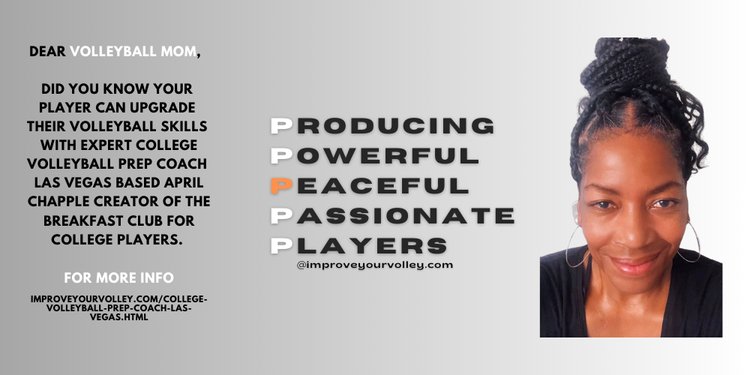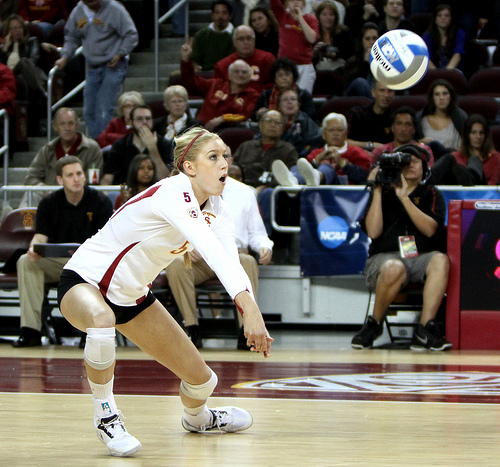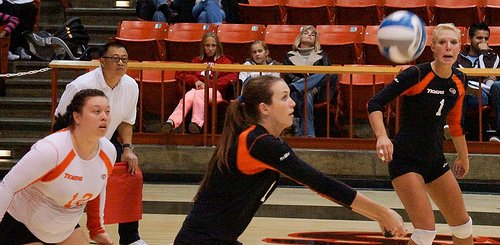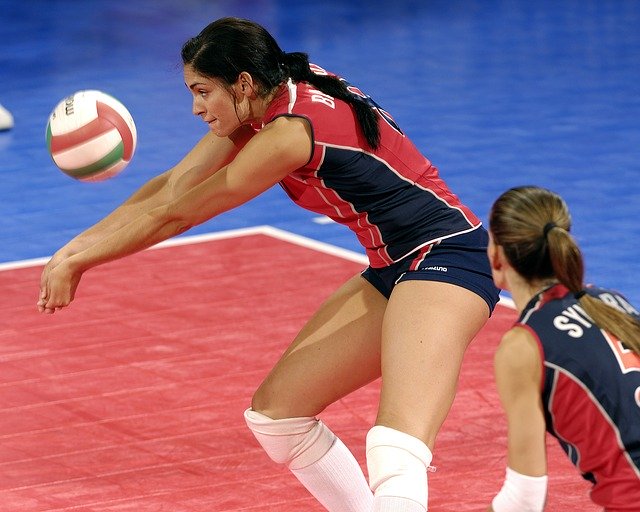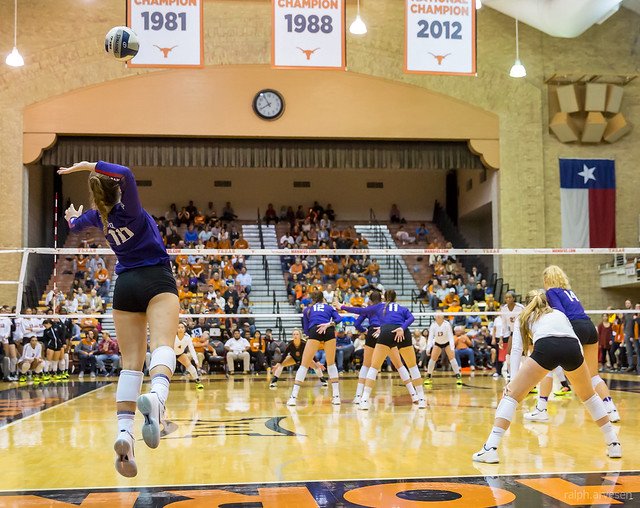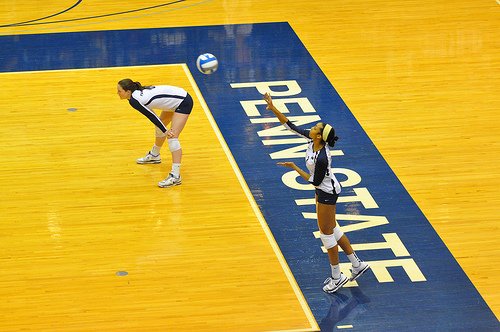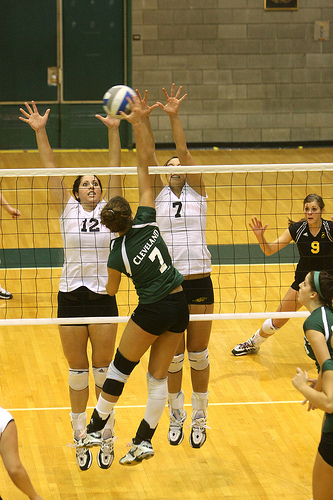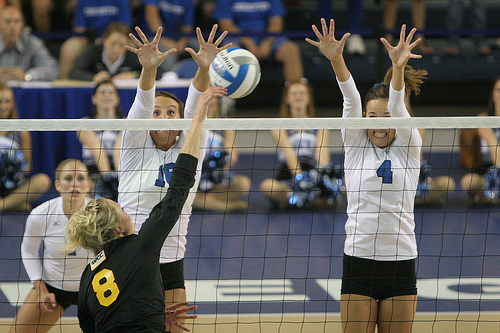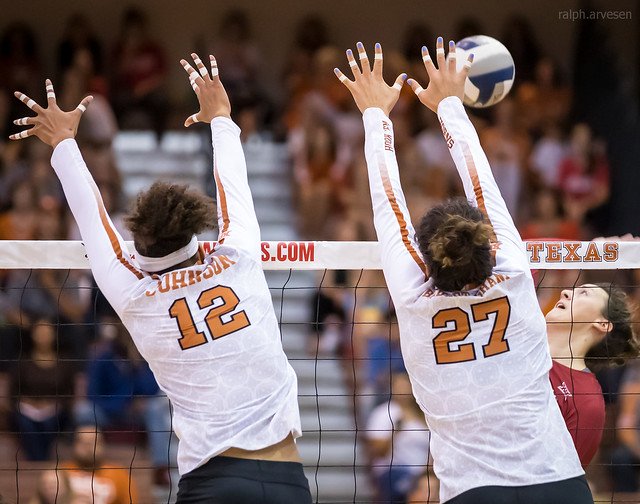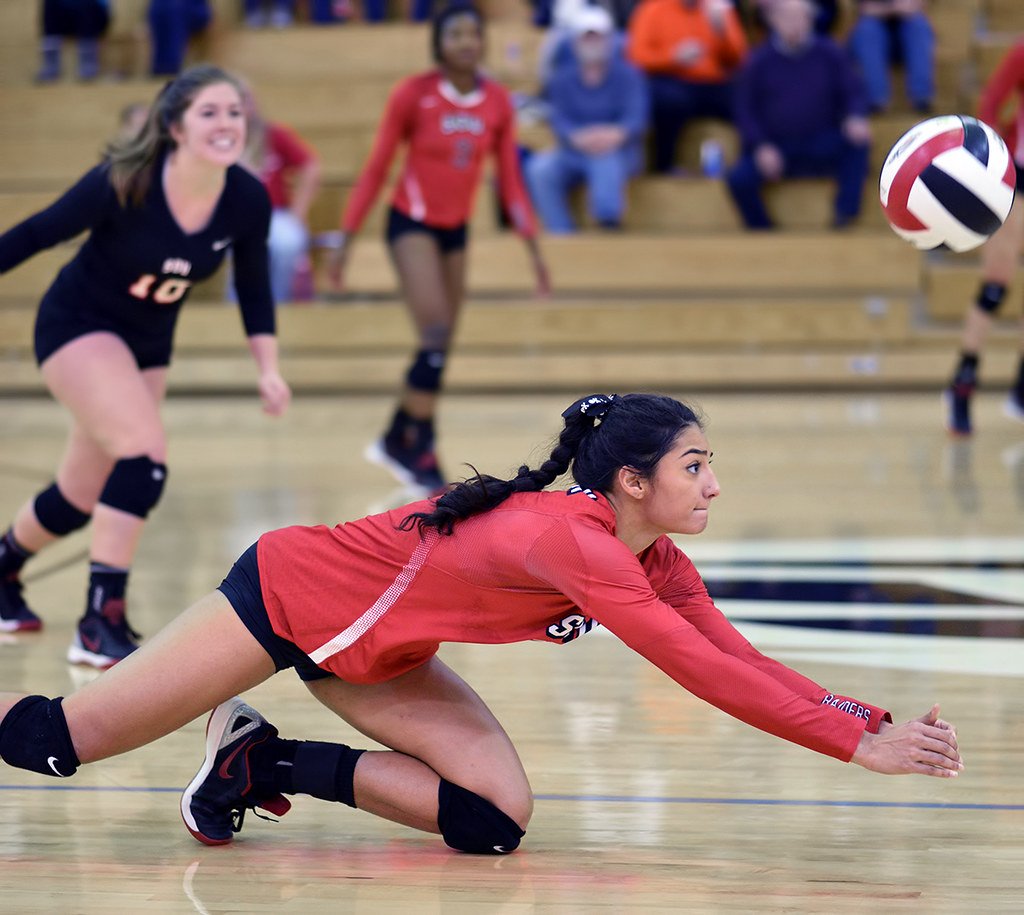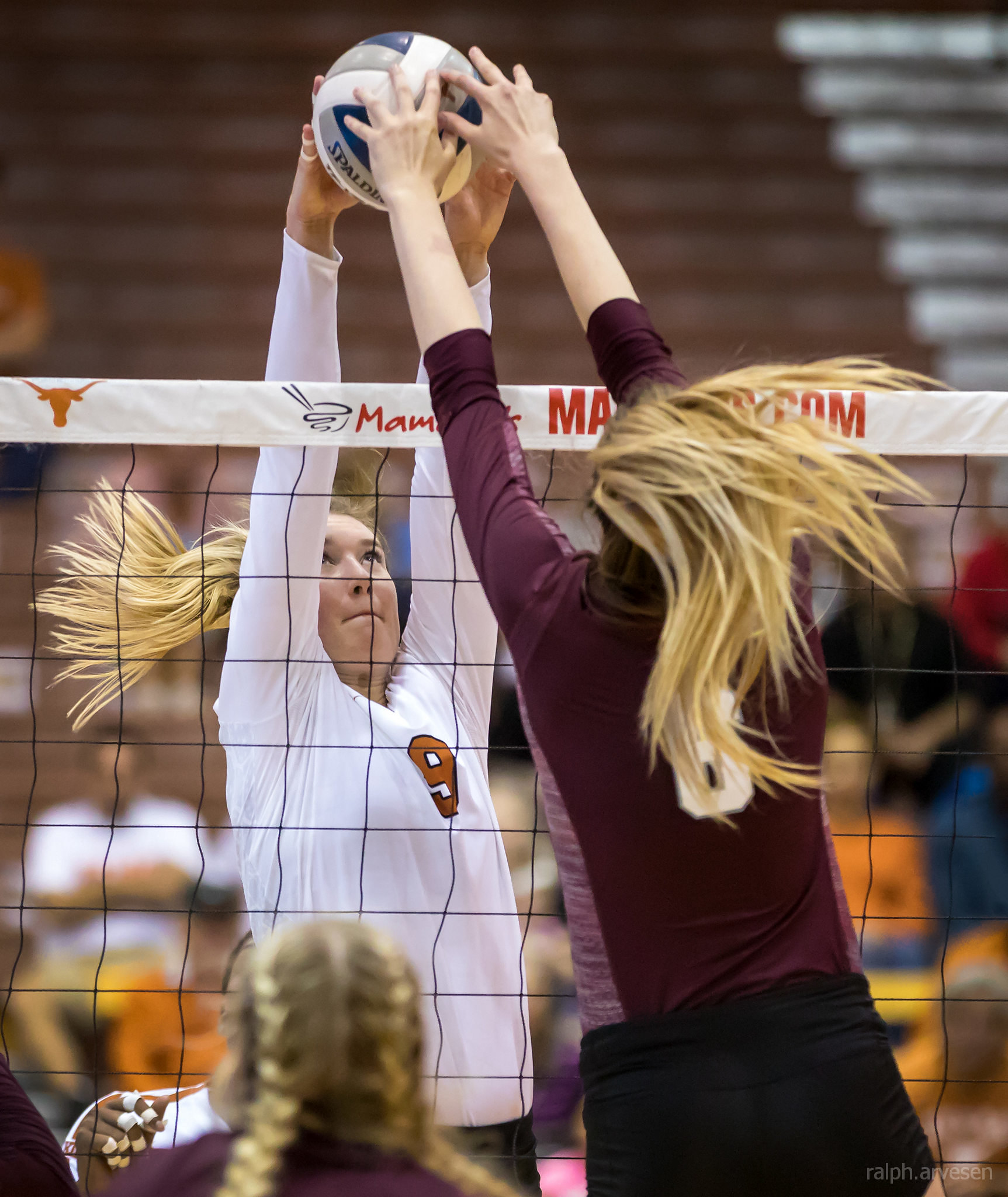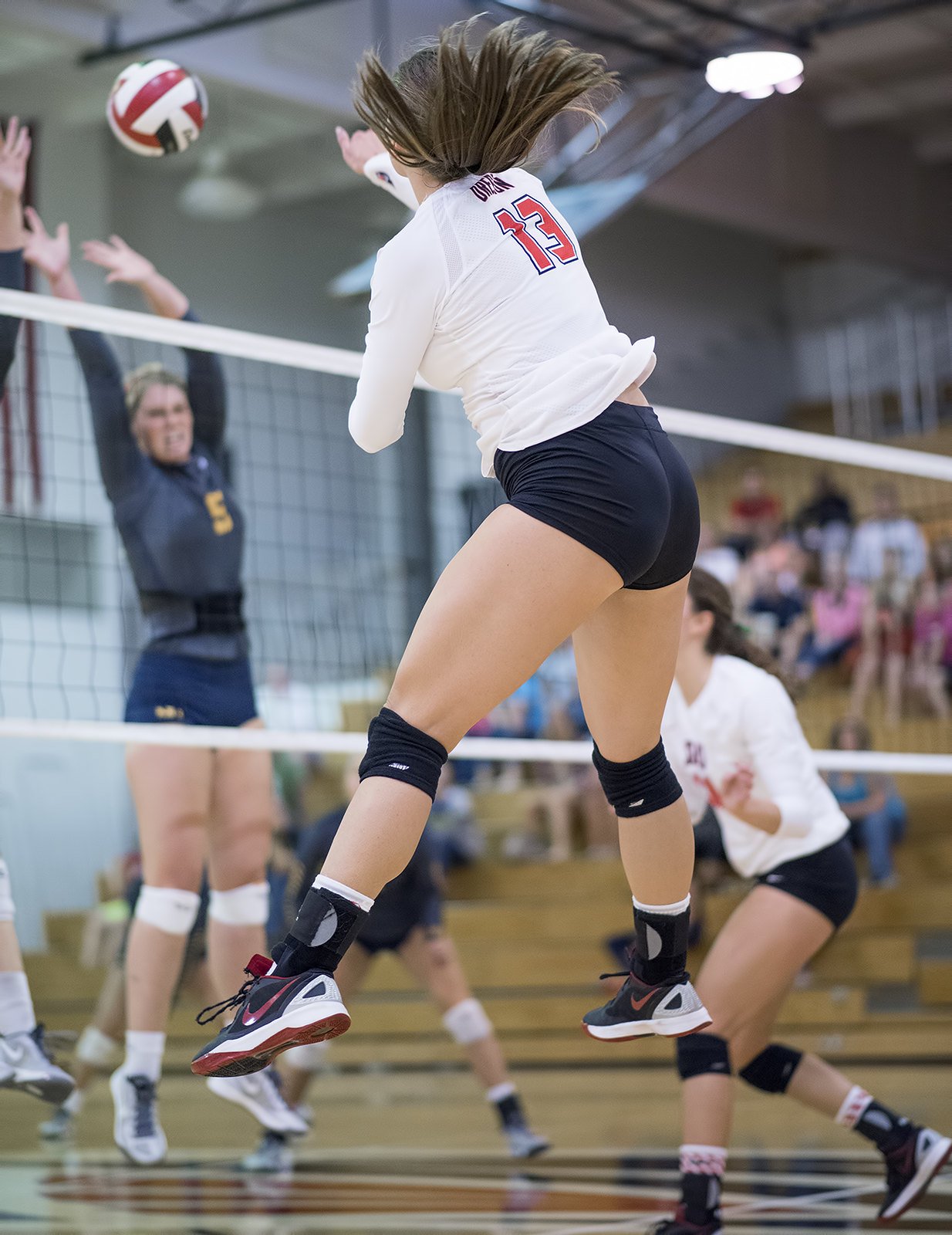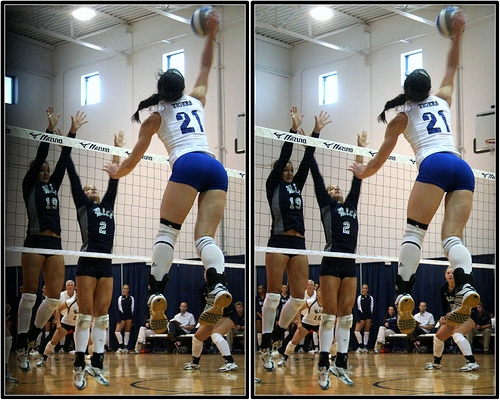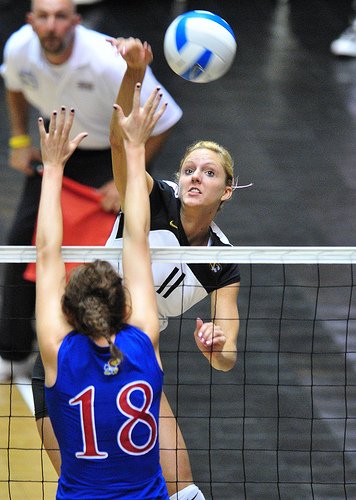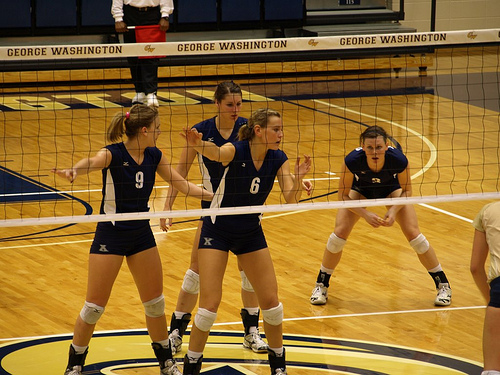- Improve Your Volleyball with Coach April
- Volleyball Tips on Playing Better and Improving Your Basic Skills
 Dear Volleyball Mom,
Do You Know What Sets My Private Volleyball Training Apart From Anyone In Vegas?
I invite You to read what my private volleyball training mission says before considering hiring me as a private volleyball coach because I'm not available for everyone.
Dear Volleyball Mom,
Do You Know What Sets My Private Volleyball Training Apart From Anyone In Vegas?
I invite You to read what my private volleyball training mission says before considering hiring me as a private volleyball coach because I'm not available for everyone.Volleyball Tips on Playing Better and Improving Your Basic Skills
Use these volleyball tips as helpful hints and lessons on how to play better volleyball starting with passing, setting, spiking, digging, blocking and serving.
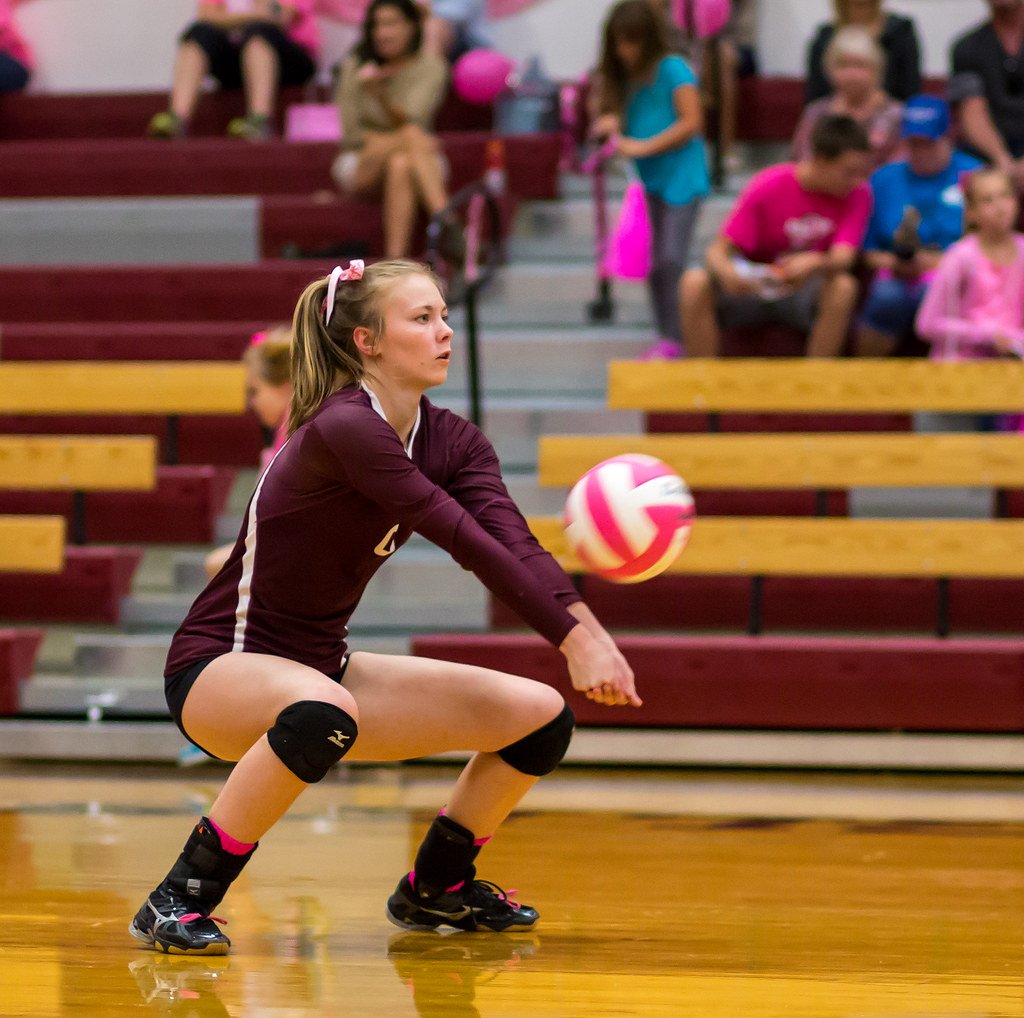 Use these volleyball tips as helpful hints and lessons on how to play better volleyball starting with passing, setting, spiking, digging, blocking and serving. (Aversen)
Use these volleyball tips as helpful hints and lessons on how to play better volleyball starting with passing, setting, spiking, digging, blocking and serving. (Aversen)Here's an index of volleyball tips on this site which should make it easier for you to find the solution to any problems you may have with performing any of the basic skills of volleyball.
Volleyball Tips For Passing Skills
In high school volleyball the ability to serve receive or to "pass" the ball from an opponent's serve is one of the most important volleyball skills to learn in order to play competitive indoor or sand volleyball games and tournaments.
You will quickly learn that what you do with your feet and lower body determines how well you will perform all volleyball fundamentals, skills and drills.
That's why I always start my coaching instructions and volleyball tips focusing on the correct positioning of the feet and lower body.
21 Volleyball Pass Tips For Players Who Need To Improve Their Passing
These 21 volleyball pass tips describe how you should pass the ball starting from when the ball is in the opposing server's hands until you completely finish your passing action
11 Ways To Elevate Your Serve Receive Game A Tutorial For All Passers
Here are 11 serve receive tips liberos, defensive specialists and back court passers can use to improve their passing and heighten the efficiency of their overall team's offense.
Volleyball Tips For Serving Skills
I focus alot of attention in practices on making strong volleyball serves because that's the one skill you have complete control of all by yourself.
Your serve can be as tough or as easy as you make it. It just takes practice.
Did you know there are 3 volleyball serving tips elite coaches teach their players on where to serve after a timeout?
These are serving strategies varsity players know. Click to find out more.
3 Volleyball Serving Tips On Where To Serve The Ball After A Timeout
Tough volleyball serves work as the game's "equalizer" because from start to finish you (the high school volleyball player) and only you control every aspect and especially the outcome of the serve.
The good news is that it doesn't matter how tall, how wide or how short you are, if you develop a tough serve that makes points consistently, I guarantee you, your coach will put you in the game and you will regularly see court time.
- Mentally decide to attack with your volleyball serves
- Just like when you spike the ball, you need to keep your elbow raised high throughout the entire swing motion
- Low toss or inconsistent toss
10 Float Serve Volleyball Tips
For Better Serving And To Score More Points
My 10 "Coach April Float Serve Volleyball Tips" are designed to help you increase serving accuracy and power while producing more float in your float serves.
Volleyball Tips For
Blocking Skills
Learn how to "seal the net" and "read the hitter" two important volleyball blocking tips to know about as well as important blocking terms for you to learn.
No matter how tall you are the following five steps will help you improve your volleyball blocking skill!
- Watch your hitter with your shoulders parallel to the volleyball net
- Jump straight up and down...don't fly along the volleyball net
- Keep palms up at shoulder height in ready position.
- Use maximum arm length since your goal is to be able to fully extend your arms at the maximum point of your block jump...every time you jump.
- Commit to Taking One Area Away
Four Blocking in Volleyball Tips To Improve Your Defensive Skills Fast
An important blocking in volleyball tip is to watch the hitter you are going to block in order to pick up important clues that'll help you block the hitter.
One Volleyball Blocking Tip For Players On Defense In The Front Row
This volleyball blocking tip describes the importance of watching the hitter when you are at the net about to block the opposing spiker in front of you.
Volleyball Tips For
Digging Skills
These 3 volleyball tips for digging a ball describe how to dig a ball without taking a step, taking one step and taking three steps away from your base in defense.
Volleyball Tips For
Spiking Skills
These tips on volleyball attacking explain what to do if you get a ball set too close to the net and you find yourself in a joust with the opposing blocker.
Tips on Volleyball Attacking Win The Joust At The Net Like A Queen
Learn more hitting, attacking and spiking tips on the pages below.
Spiking it hard, spiking it high and spiking it on or inside the ten foot line so the volleyball bounces back up high enough to hit the rafters on the ceiling..THAT is the dream, right?
Well whether you can hit the ball so it hits the ceiling or not, read the tips below to find out ways to score points by improving your hitting skill.
- Exploit the holes in the block
- Use the block
- Mix Up Your Shots
- Hit to the Deep Corners of the Court
- Hit the Bad Sets, Tip the Good Ones
Volleyball Attack Tips
Learning to attack the imperfect set and to hit high off blocker's hands are two volleyball attack tips l coach to players who need effective hitting tactics.
2 Dope Volleyball Attack Tips Hitters Use To Score A Ton Of Points
As you become a better spiker and your hitting technique improves, you will learn to spike faster and quicker sets that are lower to the net.
Volleyball Hitter Tips
Be The Smartest Spiker On Your Team
The volleyball hitter has options for scoring against opponents to score points including tipping the ball deep or short in the court to mix up your attack.
14 Spiking in Volleyball Tips That Quickly Improve Your Spike Skills
Improve your spiking in volleyball by mixing up your shots, aim for the block two ways for hitters looking for ways to score against a big opposing block.
Volleyball Tipping
6 Attack Strategies Outside Hitters Use To Score
The hard volleyball hit is not the only point scoring option a hitter has. Volleyball tipping is an offensive strategy you can use to vary your attack hits.
Volleyball Communication Tips
Talking On The Volleyball Court:
Always Call Out Where The Hitters Are
Before your team serves you should be talking on the volleyball court to inform teammates about where the hitters and the setter is on the opposing team.

This has been an important message by your favorite volleyball coach! That's me!!
Thanks for visiting.
Be sure to check out more of my volleyball articles by clicking one of the links below! (April Chapple)
Do You Follow Me on Pinterest?
 Private or semiprivate volleyball indoor/sand lessons are an excellent way for young Las Vegas high school volleyball players to quickly improve their individual skills through a private or semi-private coaching experience.
These lessons are conducted by former pro volleyball player, former USA Volleyball High Performance instructor and Evaluator and Tstreet Vegas 18s head Coach April Chapple on a weekly basis.
Sign up now!
Private or semiprivate volleyball indoor/sand lessons are an excellent way for young Las Vegas high school volleyball players to quickly improve their individual skills through a private or semi-private coaching experience.
These lessons are conducted by former pro volleyball player, former USA Volleyball High Performance instructor and Evaluator and Tstreet Vegas 18s head Coach April Chapple on a weekly basis.
Sign up now!Follow me on Pinterest Volleybragswag to improve your game even faster!
I share alot of individual, partner and easy-to-do volleyball serving drills we do in class with my followers.
Many of these volleyball practice drills you can do at home by yourself or try at your next practice with your teammates.
If you're a B team or JV player trying to make varsity next year...your goal should be to complete 1000 reps a day of at least three of the basic skills on your own...volleyball passing, serving and setting should be at the top of the list.
Volleyball Tips: Where Do You Go From Here?
Good times! Where do you need to go now? Here are three options:
- Learn more about the Tips.
- Follow the suggested reading on our Sitemap page Learning How To Play (Sitemap)
- Or visit the pages in the Volleyball Tips section in the drop down menu at the top of the page.
SUSCRIBE
To My Email Newsletter Below!
From Lady Vol to Legend: Coach April Produces Powerful Passionate Players...is that you?
What Are You Looking For?
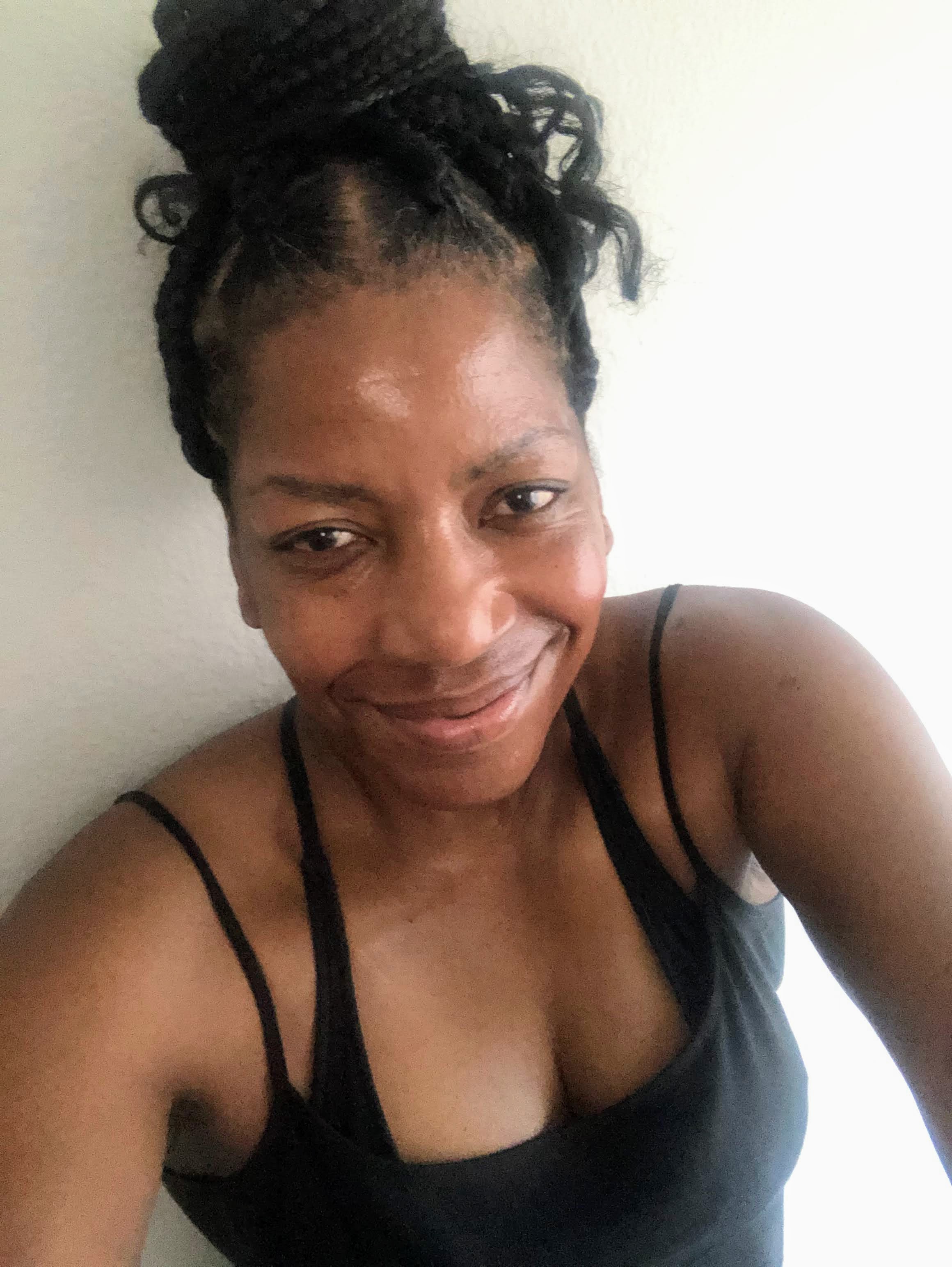
Hi there!
Thanks for stopping by. Hope you learned something today that will help you reach your volleyball goals.
Be sure to subscribe to my email newsletter so you can learn more each week!
Stay strong! Stay motivated!
-Coach April
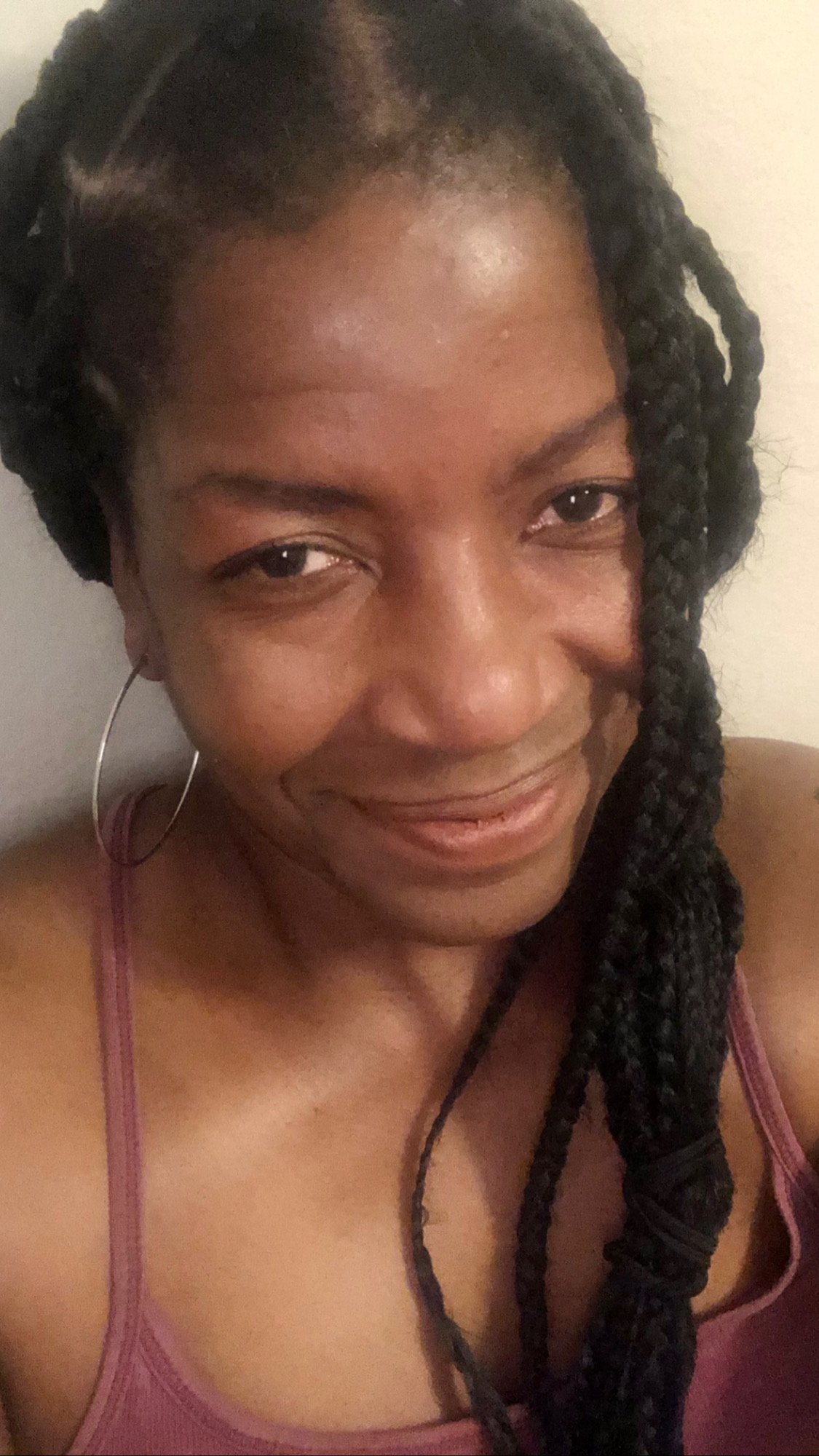
SUSCRIBE
to my email newsletter below!
Vegas Volleyball's Unsung Heroes: Celebrating Moms with Peace Love Volleyball Shirts
Ready to energize your volleyball mom journey?
Subscribe to my 'Producing Powerful Passionate Peaceful Players' email list above on ImproveYourVolley.com.
You'll receive energy-boosting tips, exclusive insights from me, Coach April Chapple on maintaining momentum in volleyball.
Let's power up the Vegas volleyball scene together!
Recent Articles
-
Coach April's Peace Love Volleyball Phrases For T-Shirts Honor Moms
Apr 13, 25 03:49 PM
Whether on the court or in everyday life, April Chapple's volleyball phrases for t-shirts are serving inspiration for players and moms, one message at a time. -
What Is A Setter In Volleyball? My Setting Guide With Answers To FAQs
Apr 13, 25 12:36 AM
Learn what a volleyball setter is from a champion coach. Get expert insights, training tips, and proven strategies for volleyball's most strategic position. -
Setter Position in Volleyball: My Expert Guide & Setting Training Tips
Apr 12, 25 04:11 AM
Learn the setter position in volleyball from an expert coach. Master essential techniques, court positioning, and winning strategies to become a great setter.
